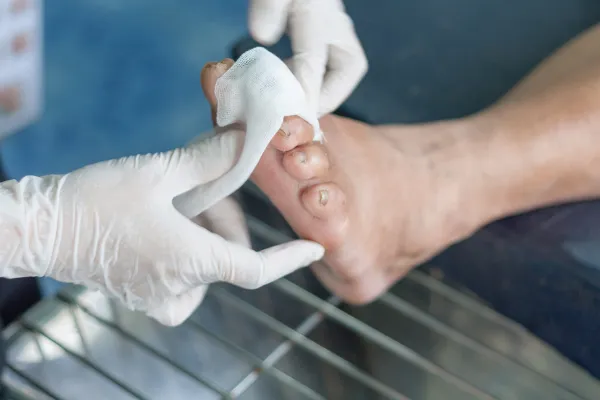
How Circulation Problems Affect Wound Healing in Your Feet
That Foot Wound Won’t Heal? Circulation Might Be the Problem
Have you ever had a cut, scrape, or sore on your foot that just wouldn't go away? You keep it clean, cover it, maybe even stop walking on it so much — but still, it lingers.
In many cases, the issue isn’t just the wound itself — it’s what’s going on beneath the surface.
And one of the most common underlying problems is poor circulation.
At American Surgeons Group, we often see patients who are frustrated by slow-healing wounds. One of the first things we check? Blood flow to the feet. Without enough circulation, even the smallest wound can become a long-term issue.
Why Good Circulation Matters for Healing
Your blood does more than carry oxygen. It also brings nutrients, immune cells, and healing factors to injured areas.
When circulation is poor, that delivery system gets delayed or blocked.
Think of it like trying to fix a broken pipe, but the repair truck can’t get through traffic. The longer it takes to arrive, the more damage can build up.
What Happens When Circulation Is Reduced?
When blood flow to the feet is limited, several things can go wrong:
Wounds take longer to heal (or don’t heal at all)
Infection risk increases
Tissue can start to die if oxygen can’t reach it
You might not even feel the wound forming, especially if you have nerve damage (like in diabetes)
This creates the perfect storm for chronic wounds, infections, and in serious cases, amputation.
What Causes Circulation Problems in the Feet?
There are several medical conditions that can affect blood flow, especially in the lower limbs:
Peripheral Artery Disease (PAD)
PAD happens when arteries become narrowed or blocked, usually due to plaque buildup. This limits how much oxygen-rich blood can reach your legs and feet.
Diabetes
High blood sugar over time can damage both blood vessels and nerves, leading to poor circulation and numbness — a dangerous combination for wound healing.
Smoking
Smoking damages blood vessels, making circulation worse and healing slower.
High Blood Pressure & High Cholesterol
Both of these can contribute to blood vessel damage and reduced flow.
Signs You May Have Poor Circulation in Your Feet
Some symptoms are easy to miss, especially early on. Watch for:
Cold feet, even when the rest of your body feels warm
Slow-growing toenails or loss of leg hair
Cramping in your legs or feet when walking (this is called claudication)
Numbness or tingling
Foot wounds that heal slowly or not at all
Pale, bluish, or reddish skin color
If you notice any of these, especially along with a sore or ulcer, it’s time to get checked.
How Podiatrists Help Heal Wounds with Circulation Issues
At American Surgeons Group, we look at the whole picture, not just the wound.
Here’s how we help:
Vascular Assessment
We check the blood flow in your legs and feet using non-invasive tests like ABI (Ankle-Brachial Index) or Doppler ultrasound.
Wound Debridement
We clean the wound thoroughly to remove any dead tissue and allow healthy tissue to grow.
Specialized Dressings
We use dressings that encourage healing, keep moisture balanced, and prevent infection.
Offloading Pressure
We might recommend custom orthotics, diabetic shoes, or a boot to keep pressure off the wound while it heals.
Referral if Needed
If the circulation problem is advanced, we’ll coordinate with a vascular specialist to help restore blood flow.
What You Can Do at Home
Managing circulation is just as important at home. Here’s how you can help your feet heal:
Check your feet daily for new sores, blisters, or color changes
Quit smoking (this one change can dramatically improve circulation)
Manage your blood sugar if you have diabetes
Stay active — even light walking helps promote blood flow
Elevate your feet when sitting if swelling is an issue
Keep your feet warm, but not overheated
When to Seek Help
If you’ve had a wound on your foot for more than a week with no improvement, or if you notice signs of infection (redness, swelling, drainage, bad odor), don’t wait.
Getting the right diagnosis early — especially if circulation is the issue — can prevent serious complications and speed up healing.
You Don’t Have to Tough It Out Alone
If you're dealing with a foot wound that’s slow to heal, or if you’ve been told you have poor circulation, we’re here to help.
At American Surgeons Group, we specialize in wound care that takes your full health into account. Let’s get to the root of the problem — and start the healing process together.
